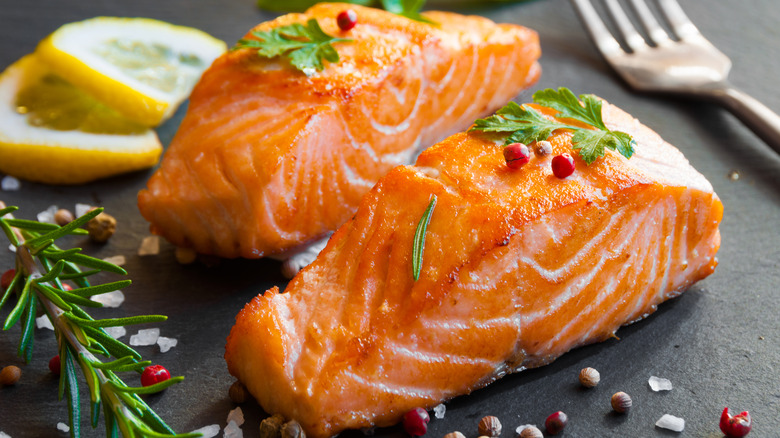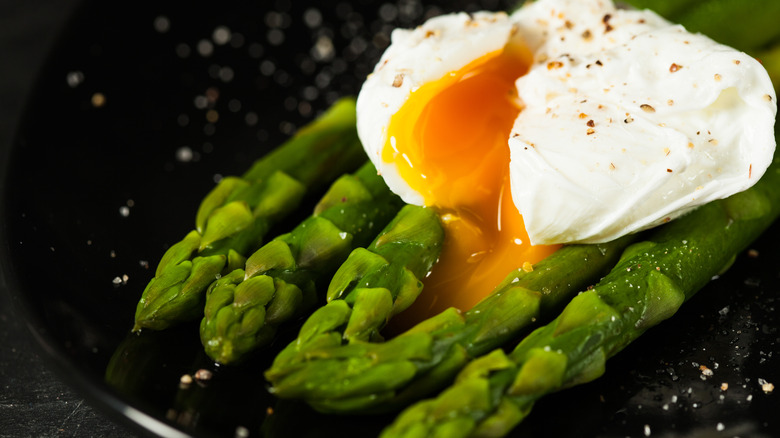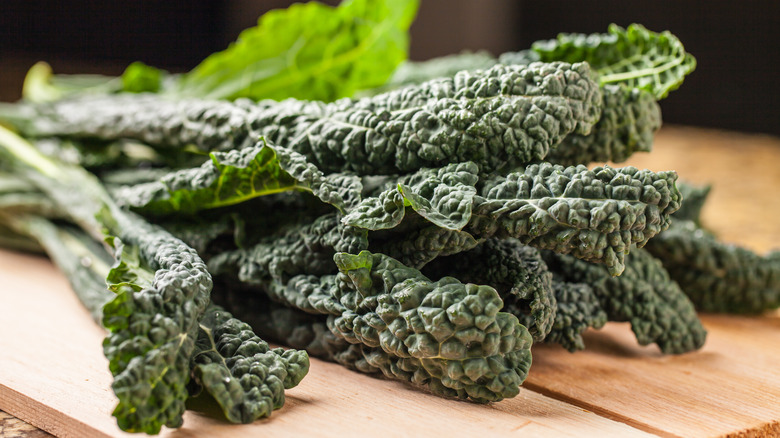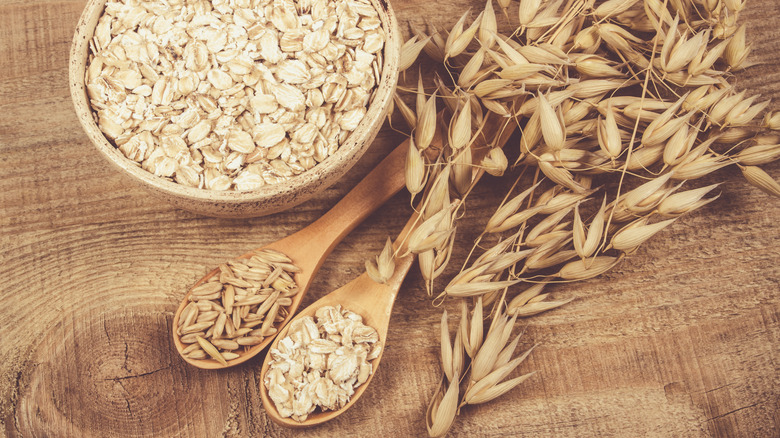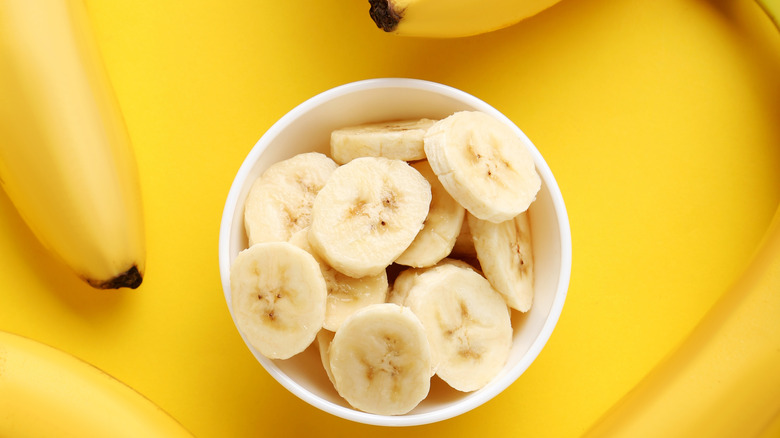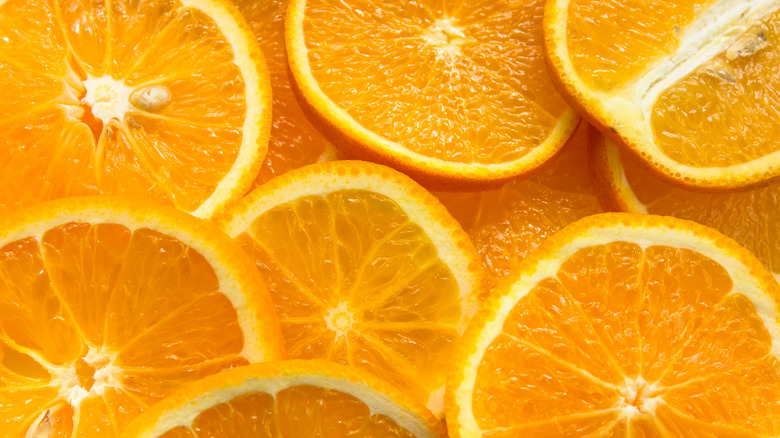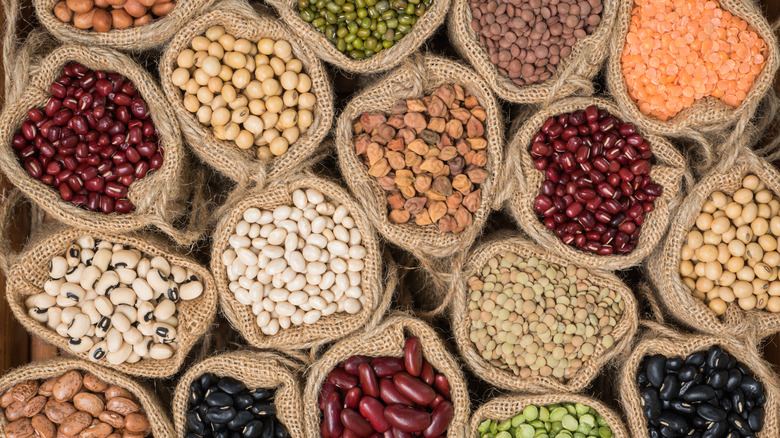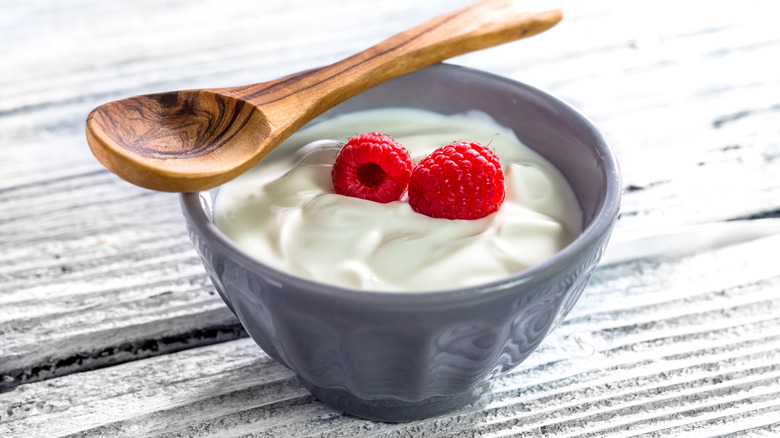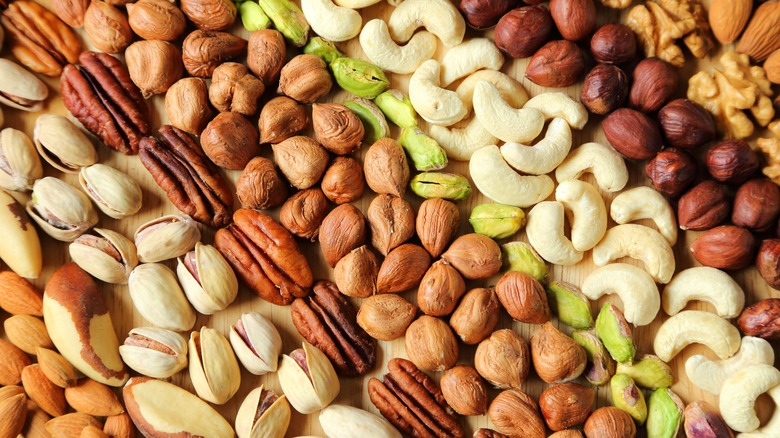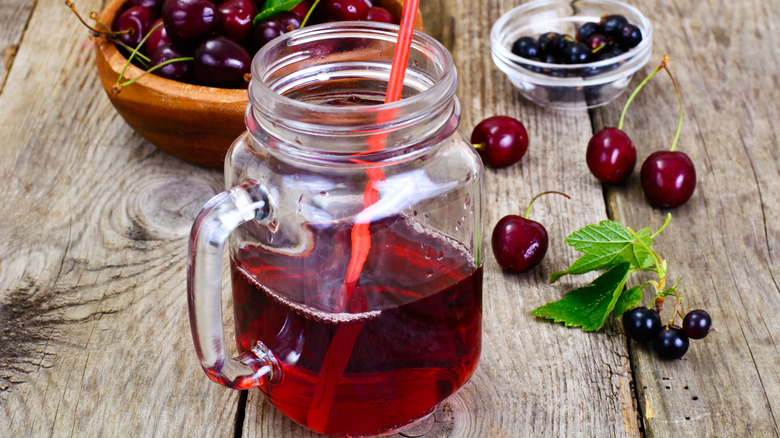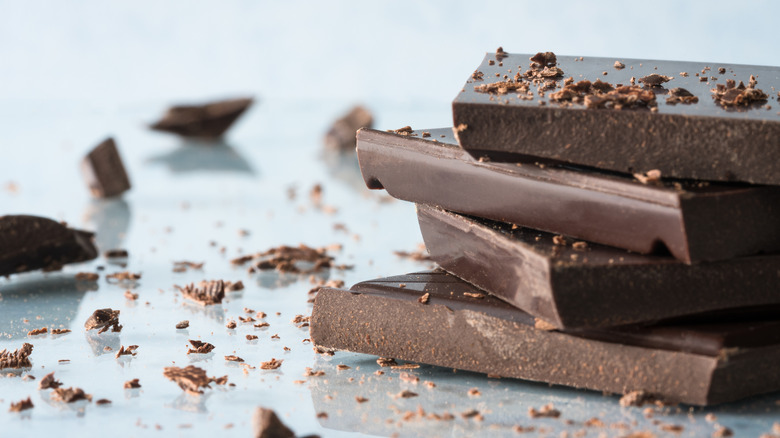Foods To Help You Deal With SAD
Fall is prime SAD weather. As daylight hours decrease and temperatures start to cool down, we're more susceptible to Seasonal Affective Disorder (SAD), a form of depression that's related to a change in seasons. Its main cause is that change in light, which impacts our circadian rhythm (sleep cycle), along with melatonin levels and levels of mood-regulating neurotransmitter serotonin. As if that weren't enough of a bummer, these changes can also impact levels of cortisol, everyone's favorite stress hormone.
You might already be familiar with some of the negative food-related aspects of SAD, such as wanting to stay in bed and eat all the carbs. Well, the good news is that certain foods can actually have a positive effect to help you rally and feel more balanced and like a functional human who actually wants to go to the gym. As a dietitian and health coach, I talk with my clients about foods to keep in your feel-better arsenal this time of year. These are a lot of the things I reach for too when I feel those seasonal "blahs" creeping in (yes, even dietitians have those days). Here are my top picks and why they're on my list of go-to foods.
Sweet potatoes
You're not alone if SAD is causing you to crave carbs. While we may feel pressured to resist carb cravings, working some quality complex carbs into our diet is actually really important this time of year. The reason it's a good idea is because carbohydrates help support efficient production of serotonin, a mood-regulating neurotransmitter. Trying to chase away the blues by calling a lonely hard-boiled egg "breakfast" and then berating ourselves for still craving carbs is a losing game.
Whole grains, beans, legumes, and starchy veggies like potatoes all provide those complex carbs you need. The reason I highlight sweet potatoes instead of white potatoes is that they contain more fiber and will break down more slowly. They're also packed with antioxidants vitamins A and C (that beta-carotene that gives them their orange color is powerful stuff!) and provide a good dose of potassium, a key mineral for muscle and nerve function. On top of that, they're delicious and incredibly versatile.
Chicken
Aside from providing stabilizing protein, animal proteins like chicken, turkey, and fish provide tryptophan, an amino acid that's a precursor to serotonin, so another essential part of serotonin function that can be affected by Seasonal Affective Disorder. Top a salad with grilled or baked chicken or make a big pot of chicken-and-veggie soup to enjoy on blustery days.
If you're worried about dry, overcooked chicken breast killing your happy vibes, try boneless skinless chicken thighs — the nutrition profile is similar but they have a richer flavor and cooking tends to be more forgiving, especially for chicken newbies. Bonus, that little bit of fat will boost satiety so you're satisfied with a smaller portion.
Squeamish about handling raw chicken? I get it. Your slow cooker is your best friend for doing the heavy lifting while you go about your day. Put the chicken thighs in there with some chicken broth, whatever herbs and spices you like (I love herbes de Provence for this) and maybe a splash of white wine. Cook it on low for four hours and, voila — you've got several servings of chicken ready to go. I like to portion out a few servings to stick in the freezer for busy days when cooking from scratch just isn't happening.
Salmon
When you're exposed to less sunlight, getting enough of vitamin D, the so-called "sunshine vitamin" (the body synthesizes vitamin D via sunlight exposure) through the diet is extra-important. When our vitamin D levels are low, we may feel more depressed or like we're caught in a brain fog. These same fish are also great sources of omega-3 fatty acids, which are helpful for counteracting the effect of cortisol, everyone's favorite stress hormone.
Enjoy a serving of fish two to three times per week to reap the benefits for SAD. A lot of people are anxious about preparing fish at home, but it's actually quite easy once you get the hang of it. Here's what I do on a night I don't want to fuss or deal with clean-up: marinate a filet of salmon (or filets, if you're making multiple servings) in a mix of low-sodium soy sauce, olive oil, maple syrup, and water (to thin it out). Meanwhile, line a sheet pan with foil and toss chopped sweet potato and broccoli florets with some olive or sesame oil. Spread the veggies on the sheet pan and roast at 425 degrees fahrenheit and then, after the first 15 or 20 minutes, make room on the pan for the salmon filets and cook for another 10-12 minutes or until the salmon is opaque in the middle.
Eggs
Eggs are a delicious way to fill up on satisfying protein and fat that can help combat Seasonal Affective Disorder. They also contain tryptophan and vitamin D. Eat the yolks to get all the good stuff. What's nifty about eggs is they also offer instant portion control, at about 70 calories and six grams of protein each.
Enjoy a veggie omelet or frittata or top a bowl of lentil soup or a grain-and-veggie bowl with a poached egg for an easy upgrade. If you're wondering how much is okay when it comes to whole eggs, the American Heart Association recommends consuming them within the context of your daily calorie and saturated fat intake and mixing one whole egg with a few whites is a great way to still reap the benefits without worrying about overdoing it.
For most healthy adults, the equivalent of about one egg per day (or seven per week) is a realistic amount if you're eating other sources of animal protein, but know that more or less may be appropriate if you have certain underlying health conditions or dietary restrictions.
Dark, leafy greens
A dietitian telling you to eat your greens — surprise, surprise. This one is a cliche for good reason, though! Pleasure-inducing brain chemical dopamine plays an important role in mood. The folate in dark, leafy greens like spinach and kale, for example, enhances production of dopamine, so incorporating plenty of folate-rich foods can support adequate dopamine levels to help keep you from dipping into SAD territory.
Enjoy a big spinach salad or chop and cook kale along with some of your other favorite veggies. Swapping out rice and enjoying chili over steamed greens is a great way to up the nutrient value and keep carb levels in check. You can also do a green smoothie (frozen or fresh) or try adding chopped greens to soups and stews to sneak some into what you're already enjoying as part of your usual day.
Oats
Oatmeal is another nutritionist cliche that earns its place in your wellness routine. Aside from providing slow-burning complex carbs, oats also contain tryptophan and vitamin B6, which is also key to serotonin production.
Enjoying an oatmeal breakfast is an awesome way to start off on stable footing when you're susceptible to Seasonal Affective Disorder — just make sure you incorporate some protein to avoid burning right through those carbs and winding up hungry an hour later. My go-to combo is one-third of a cup of rolled oats and cinnamon cooked with two-thirds of a cup of water and then topped with a tablespoon of nut butter. For added protein, you could cook in a beaten egg or even stir in a scoop of protein powder or a quarter cup of cottage cheese or ricotta after cooking.
For a change of pace, try savory oatmeal. Add spices like turmeric, ginger, garlic powder, and paprika. I love to add leftover cooked veggies, an egg, and then some sliced avocado or a spoonful of tahini for healthy fat. If you're totally over oats, swapping in another whole grain will still provide those complex carbs and fiber to keep you stable.
Bananas
I've found a lot of people are afraid to eat bananas, but these guys can actually be your BFF during the SAD months. They're a good source of complex carbohydrates, vitamin B6, and potassium. They also contain tryptophan.
To keep portions realistic, opt for a small banana or enjoy half of a larger one and save the rest for later. A banana with peanut butter makes a soothing bedtime snack. Using a banana in smoothies is another great way to enjoy them. That annoying person in your office or carb-phobic cousin who says bananas are evil and packed with sugar and will make you fat and kill you? Ignore them.
Oranges
Oranges are another good source of folate if you're dealing with Seasonal Affective Disorder. They also are packed with immune-boosting vitamin C. Enjoy them on their own or toss into a salad. You could also throw a few sections into your smoothie. Another reason oranges are on my cold weather must-haves is that peeling them takes focus, and it gives you something to do with your hands and turn your attention to when you might be inclined to stress-eat.
Pack one in your bag for an afternoon snack on a workday to ride out the 3 p.m. urge to hit the vending machine. Also a bonus: that bright color is super-cheerful and a great way to boost your mood on a gray day.
Lentils, chickpeas, and other legumes
Lentils, beans, peas, and other legumes are great sources of fiber as well as tryptophan. They also contain folate to help boost those SAD-fighting dopamine levels. Instead of rice or pasta, how about enjoying your protein and veggies with lentils or beans as your carb?
A half-cup serving of cooked lentils (or a quarter-cup dry) boasts 12 grams of protein and five grams from fiber for its 170 calories. Lentils are great in soup or salads, or try roasted chickpeas as a delicious snack or salad or soup topping.
They're super-simple to make: just toss with spices (try a combo of turmeric, paprika, cinnamon, and garam masala) and a little oil and bake at 350 degrees fahrenheit on a foil-lined baking sheet for about 20 minutes or until crispy. Make sure to shake a few times during cooking to prevent sticking and burning. Another fun DIY: homemade hummus.
Plain Greek yogurt
Yogurt is a great way to work some beneficial probiotic bacteria into your diet to support proper digestion. Because so much neurotransmitter production occurs in the gut, nourishing the health of the digestive tract is key to overall wellness and combatting Seasonal Affective Disorder. Additionally, the majority of our immune system function occurs in the digestive system, so keeping that in good working order may help you avoid fall and winter colds. Another thing yogurt has going for it: calcium. Because low calcium levels have been linked to anxiety and moodiness, getting enough in the diet is key for keeping it together.
So why plain? Skipping flavored yogurt varieties will save you sugar and the excess calories and blood sugar roller coaster as your body works hard to process that load. Besides, you get to customize your experience when you add your own flavor.
To make yogurt part of your regular healthy living routine, enjoy a Greek yogurt parfait with chia seeds or ground flax (both great plant-based sources of omega-3s and rich in fiber) and blueberries (packed with brain-boosting antioxidants) or use it in your smoothie. Because Greek yogurt is packed with protein, you won't even need to add protein powder.
Nuts and nut butter
Nuts are great to put on your anti-SAD shopping list. They provide a good balance of protein, healthy fat, fiber, and even omega-3s in some varieties. To keep calories realistic, just be mindful to stick to about a quarter-cup serving of nuts or two tablespoons of nut butter (or less, if you're enjoying them as a garnish for another dish).
Brazil nuts contain an important nutrient called selenium, which as also been associated with mood. To avoid going overboard with supplements and risk causing more harm than good, it's best to incorporate food sources of nutrients into your diet. No need to go crazy, though, a few Brazil nuts a few times a week will actually cover your bases.
Tart cherries
Melatonin is a hormone that regulates our sleep cycle and may help you deal with Seasonal Affective Disorder. Because our melatonin levels tend to take a hit from the reduced daylight hours and we struggle to get into the groove with Daylight Saving Time, supporting healthy levels can help us sleep better and feel better overall. While it isn't naturally present in many foods, tart cherries (and tart cherry juice) is on the short list and has been shown to help improve sleep. Just keep portions to four ounces of juice (best time to have it is before bed) and take it into account as a serving of fruit in the context of your overall nutrition needs for the day.
Also worth noting, because melatonin production is tied into serotonin levels, eating foods that support efficient serotonin production can help boost melatonin levels.
Dark chocolate
Yep, I'm giving you permission to enjoy dark chocolate as a part of your regular anti-SAD diet. Not that you need permission, of course! Aside from being delicious, dark chocolate is packed with powerful compounds called flavanols that have been extensively researched for their health benefits, which include neuroprotective effects and improved mood.
Chocolate also contains magnesium, a key mineral in muscle and nerve function, which includes cell signaling. Just be mindful of portions and make sure to account for it in the context of your day — studies have shown that about an ounce per day is all you need to reap the benefits. That will depend on the size of the bar so scope out the label to see how many ounces the whole thing is to help you figure out how much will give you that amount.
When to see your doctor
Depression, including Seasonal Affective Disorder, is a serious health matter, and not something to be brushed off if it's impacting your daily life. All the healthy, balanced meals and all the dark chocolate money can buy won't solve the issue if you're seriously depressed, so don't hesitate to reach out to an expert for support. If you're struggling with symptoms such as loss of interest in things that were once important to you, feelings of hopelessness, suicidal thoughts, or other signs of major depression, talk to your doctor about which treatment options are appropriate for you.



